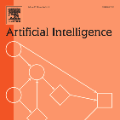The advancement of Artificial Intelligence (AI) has created opportunities for e-learning, particularly in automated assessment systems that reduce educators' workload and provide timely feedback to students. However, developing effective AI-based assessment tools remains challenging due to the substantial resources required for collecting and annotating real student data. This study investigates the potential and gap of simulative data to address this limitation. Through a two-phase experimental study, we examined the effectiveness and gap of Large Language Model generated synthetic data in training educational assessment systems. Our findings reveal that while simulative data demonstrates promising results in training automated assessment models, outperforming state-of-the-art GPT-4o in most question types, its effectiveness has notable limitations. Specifically, models trained on synthetic data show excellent performance in simulated environment but need progress when applied to real-world scenarios. This performance gap highlights the limitations of only using synthetic data in controlled experimental settings for AI training. The absence of real-world noise and biases, which are also present in over-processed real-world data, contributes to this limitation. We recommend that future development of automated assessment agents and other AI tools should incorporate a mixture of synthetic and real-world data, or introduce more realistic noise and biases patterns, rather than relying solely on synthetic or over-processed data.
翻译:暂无翻译




